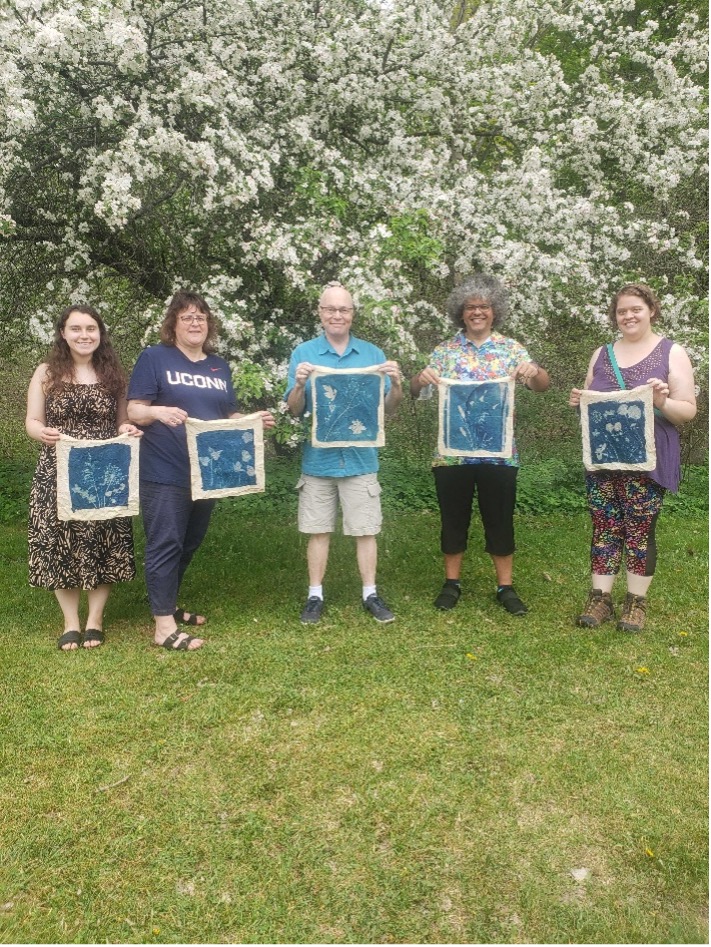Handicraft & Projects
Illuminating Nature: The Cyanotype Art of Madge Evers
November 10, 2025
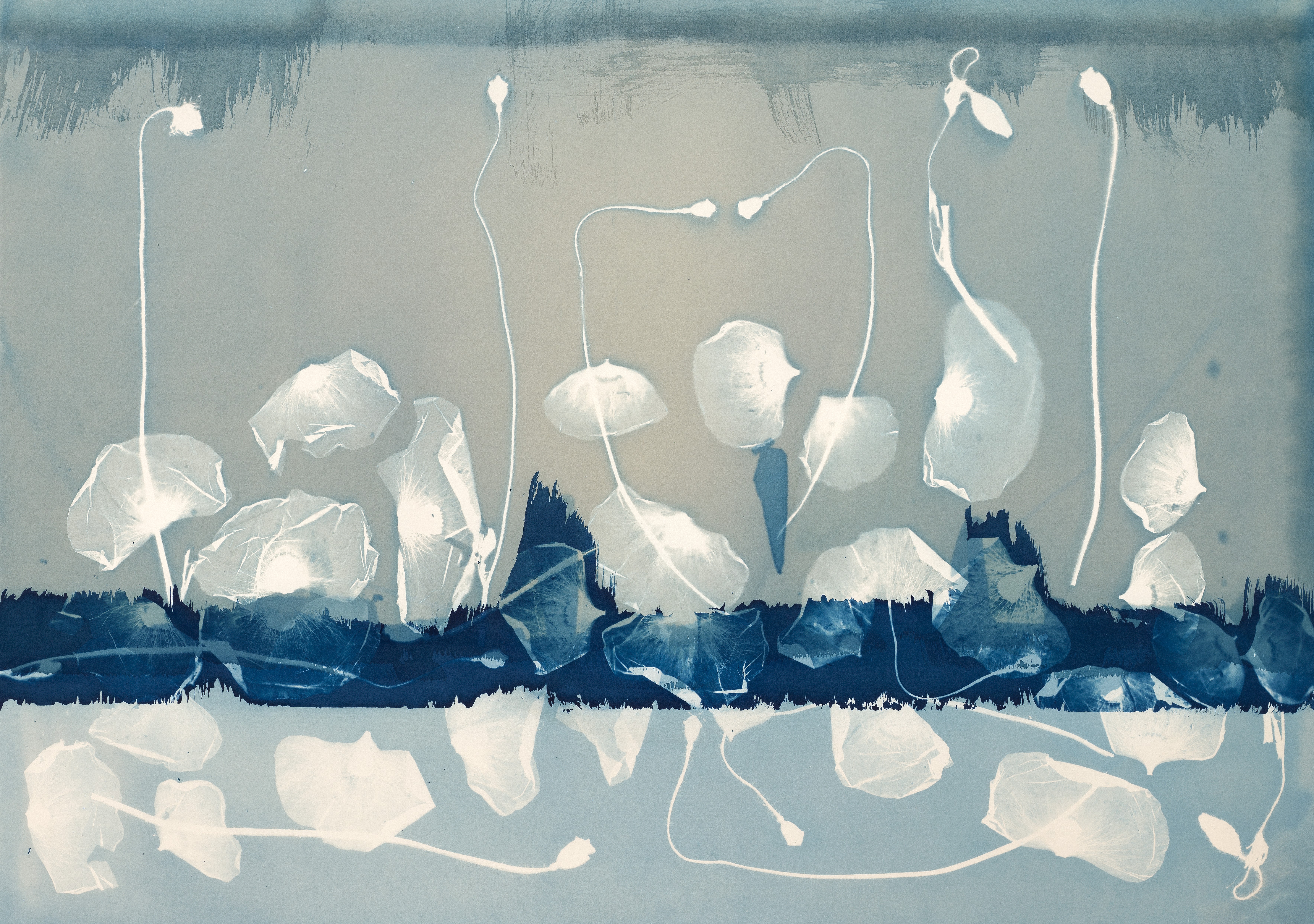
Undersea World of Poppies II ⒸMadge Evers
When you first encounter the work of artist Madge Evers, you’re struck by the ethereal blues that seem to breathe life into her prints. Delicate botanical silhouettes, intricate textures, and an unmistakable sense of wonder. Her medium of choice, cyanotype, captures the magic of sunlight and the quiet poetry of plants, creating a bridge between art, nature, and time itself.
“I first learned of the cyanotype process almost 40 years ago,” Madge recalls. “I worked for a photographer in NYC who showed me a blue photograph she’d created using cyanotype chemistry, and I was blown away.” Decades later, that spark of curiosity reignited, and Madge began experimenting with the process herself, discovering that all it required was sunlight, water, and a deep appreciation for the natural world.

Making Friends with Night, cyanotype on washi ⒸMadge Evers
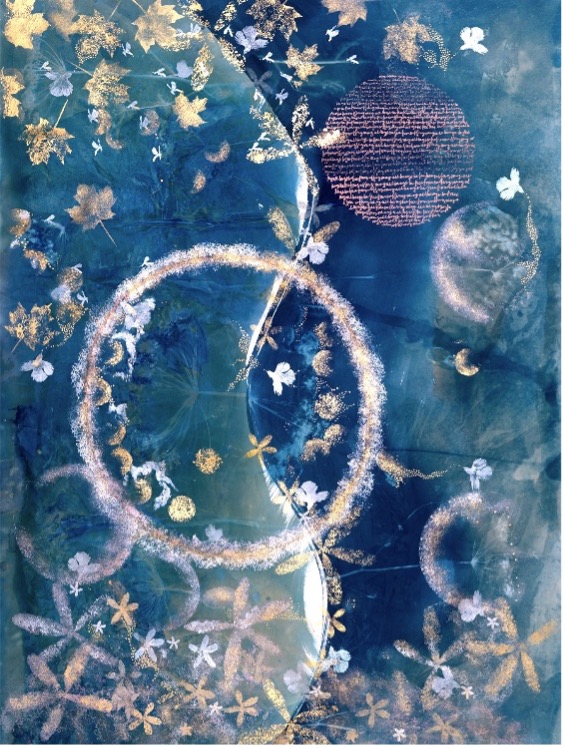
Ring Fort, Chickadees, Fireflies, acrylic and ink on cyanotype ⒸMadge Evers
The Magic of Sunlight
For Madge, cyanotype is more than an artistic process; it’s a ritual of connection. “I can’t overstate how important plants and trees are in my life,” she says. “Winter in New England is long, so when spring arrives, I’m thrilled to get back outside. This means gardening, walking in the woods, and making cyanotypes in my yard.”
Each piece begins with the simple act of arranging plant material on natural fabric — cotton, linen, or silk — treated with a light-sensitive solution. After exposure to sunlight and a rinse with water, the image emerges in vibrant Prussian blue, a hue that has become synonymous with the cyanotype tradition.
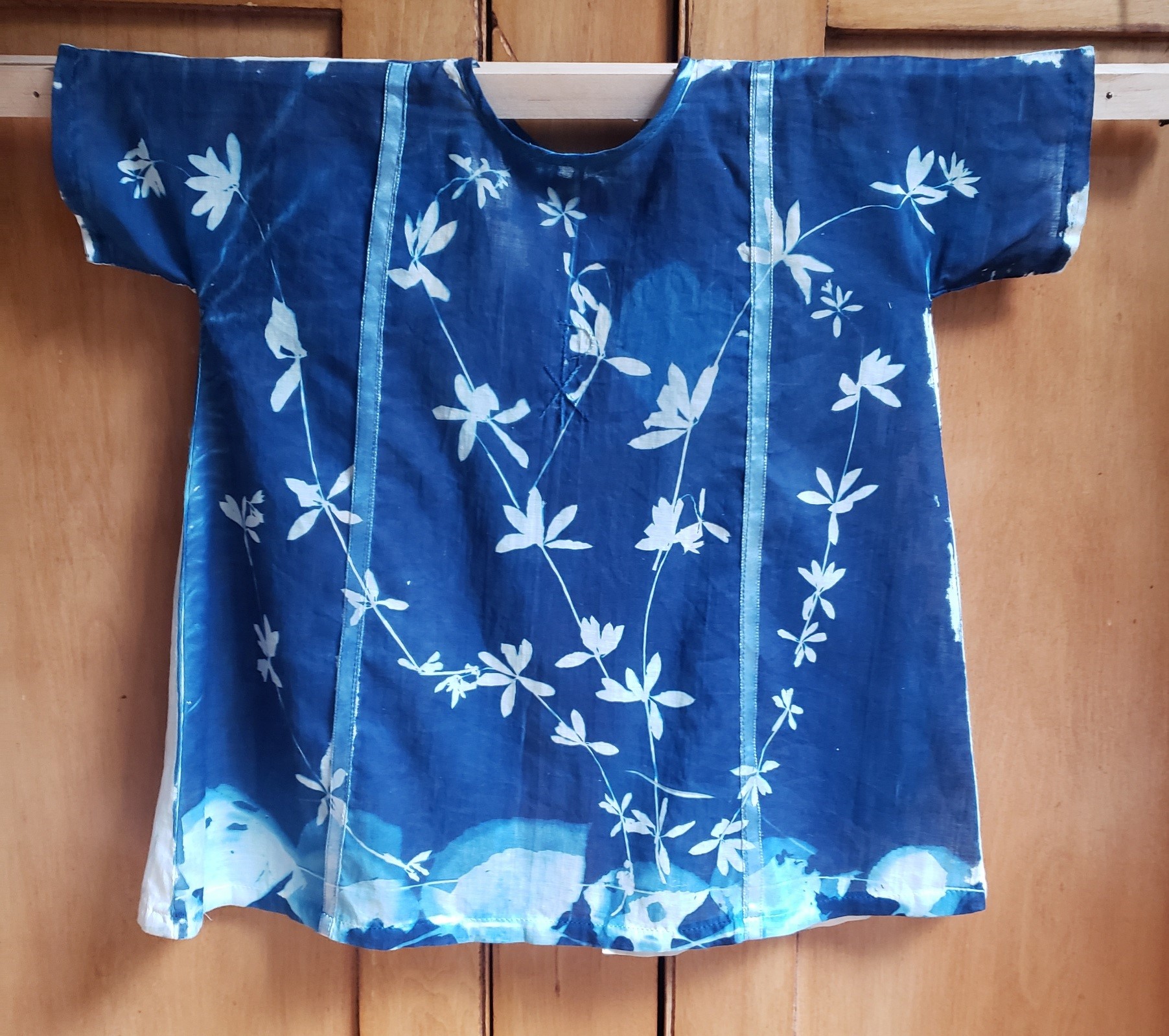
Cleaver fabric cyanotype dress ⒸMadge Evers
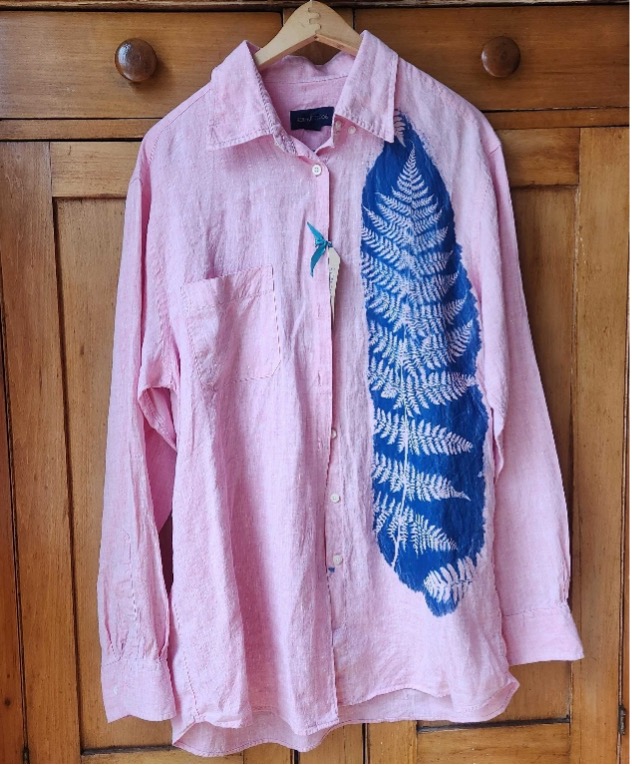
Upcycled linen shirt ⒸMadge Evers
Caring for Wearable Art
Madge’s creative exploration extends beyond fine art prints to wearable cyanotype pieces, such as upcycled linen shirts and cotton tote bags.
Because cyanotypes are sensitive to harsh detergents and chemicals, Madge takes special care in how she washes her pieces. “Products with bleach, sodium, or phosphates cause fading,” she explains. “With Eucalan, there’s absolutely no fading. With other detergents, I've seen the bright Prussian blue become a dull green.”
Eucalan has become an essential part of her process, both for caring for her own work and for teaching others how to preserve theirs. “I first discovered Eucalan at the incredible yarn store, Web’s,” she says. Now, Madge includes Eucalan in her class handouts. “I want people to feel they can actually use the items on which they make a cyanotype print…usually on shirts or tote bags. If they know there’s a reliable way to clean their items, I think it’s more likely they’ll use them and share them with others.”
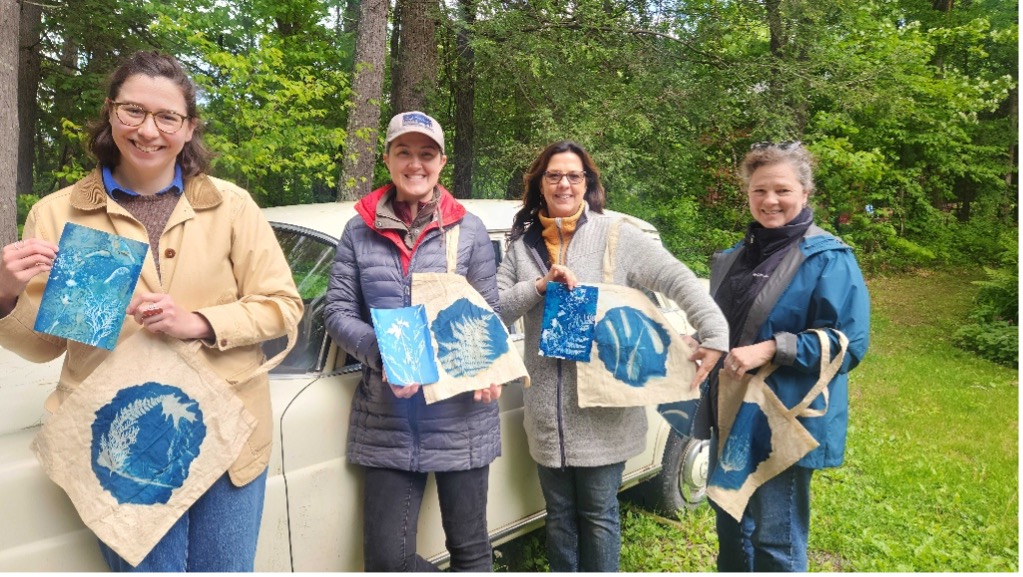
Cyanotype workshop participants with paper prints and cotton tote bags ⒸMadge Evers
Teaching the cyanotype process
Madge’s workshops are where her love for this medium truly shines. “The process is magical,” she says. “Without fail, folks find it mesmerizing. Plus, it's quite accessible.” In her classes, participants experiment with paper, fabric, and natural light, watching their own blue-tinted masterpieces come to life before their eyes.

Cyanotype on fabric ⒸMadge Evers

Cyanotype on paper ⒸMadge Evers
What’s Next: A Book and Beyond
Looking ahead, Madge is preparing to release a book in June, featuring 14 projects that explore different aspects of the cyanotype process, including several focused on fabric. “The cyanotype process really lends itself to experimentation,” she says. Readers are to feel empowered to play, explore, and see what they can create.
As she embarks on a year of book-centered travel, workshops, and demos, one thing remains constant: her devotion to the interplay between art, nature, and care.
To learn more about Madge’s work, workshops, and upcoming book, sign up for her newsletter or explore her affiliate link to try cyanotype yourself (use code MADGE for 20% off).
Because sometimes, all it takes is a bit of sunlight and the right kind of care to make art last a lifetime.
